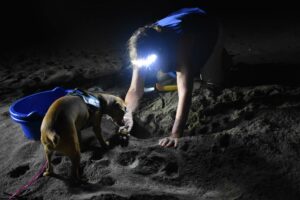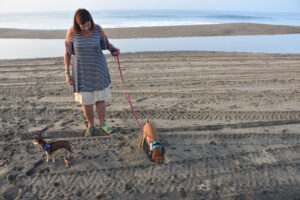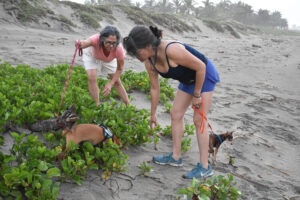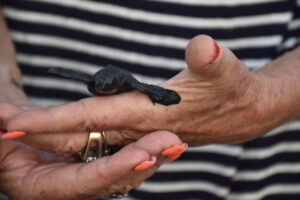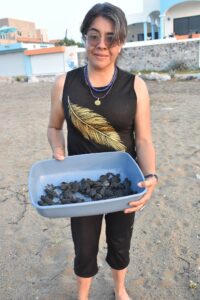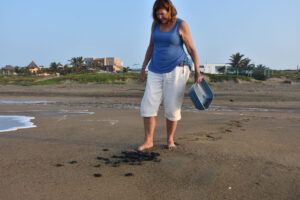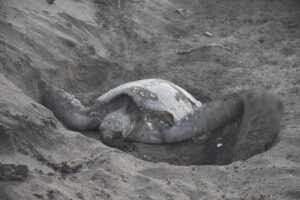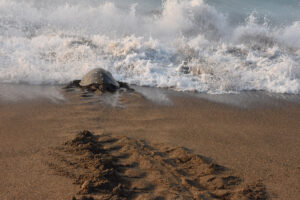Joseph Sorrentino
Coco has been finding turtle nests for two years now. “She’s a Mini pin (Miniature Pinscher) and something else,” said Eileen Hoeter, her owner. Eileen and her husband Jedd built Villa Star of the Sea, a resort in Playa del Coco, Colima, Mexico, in 2015, and, as they walked along the beach, would come across baby turtles and females laying eggs. “There are three types of turtles here,” said Eileen, “Olive Ridley, Green Turtle and Leatherback.”
The first two species are listed as vulnerable and Leatherbacks are critically endangered. Soon after they opened their resort, they were asked by ECOBANA, an animal rescue organization in nearby Barra de Navidad, to build a turtle sanctuary. They opened it in late 2015.
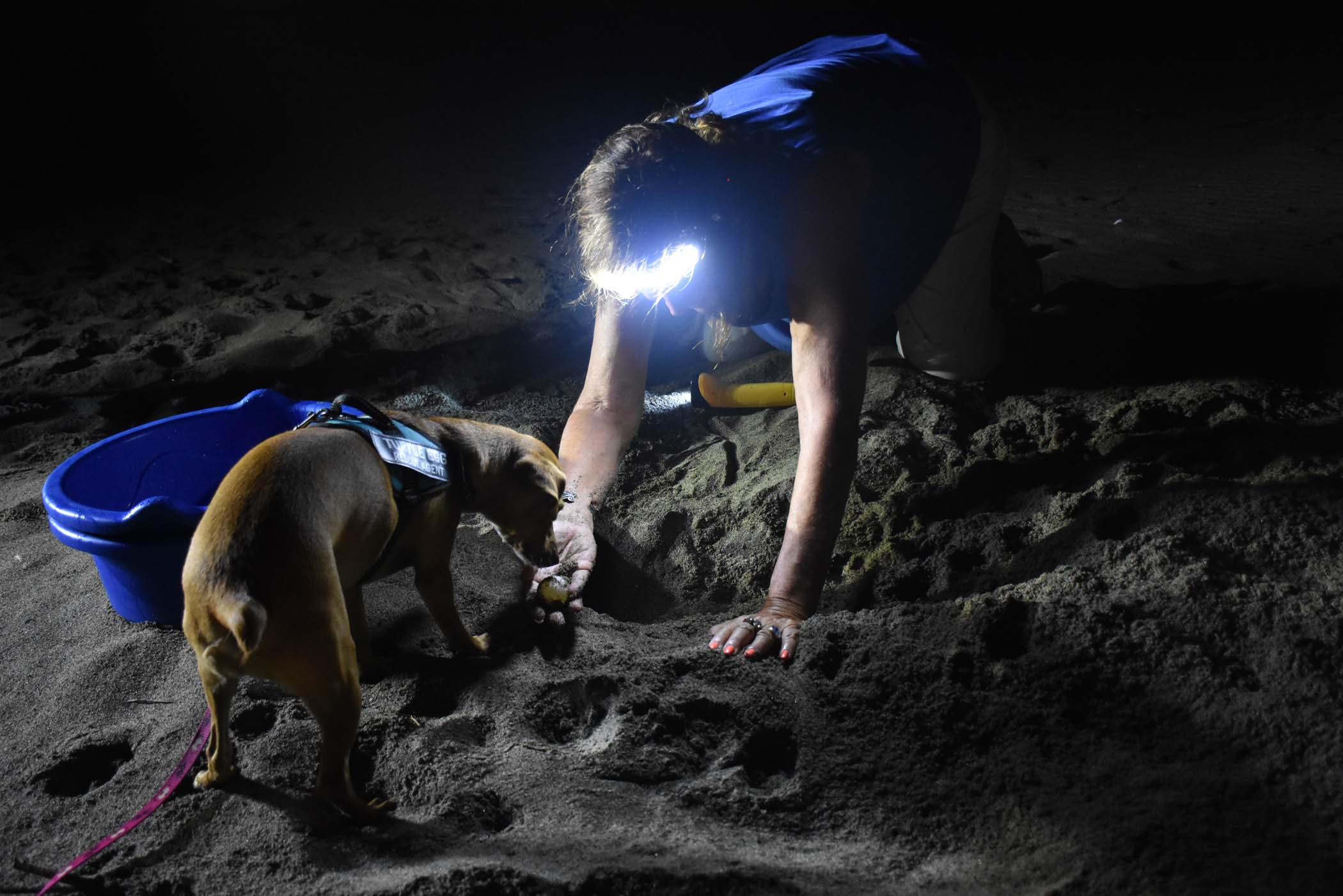
The Hoeters attended a session at the University of Guadalajara to learn how to handle the eggs and babies. It’s illegal to collect eggs but they have certificates from the university showing they have permission to do so. Virtually every morning they’re in Playa del Coco, they’re out searching for turtles and eggs, something that starts well before dawn.
Coco sat in Eileen’s lap, peering intently into the darkness as we headed out to the beach in Eileen’s jeep. “We have to start before dawn because once it’s warmer, it’s too late to release them,” said Eileen. “It also stops poachers and dogs.” As we drove, she pointed out holes that were nests dug up by poachers. “They sell the eggs for five or maybe eight pesos. People believe they’re an aphrodisiac.” She said poachers aren’t dangerous and if she finds someone stealing eggs, she’ll sometimes give them some money and warn them that they’re risking five years in jail. Other holes were surrounded by dried egg shells; those were eggs found and eaten by dogs.
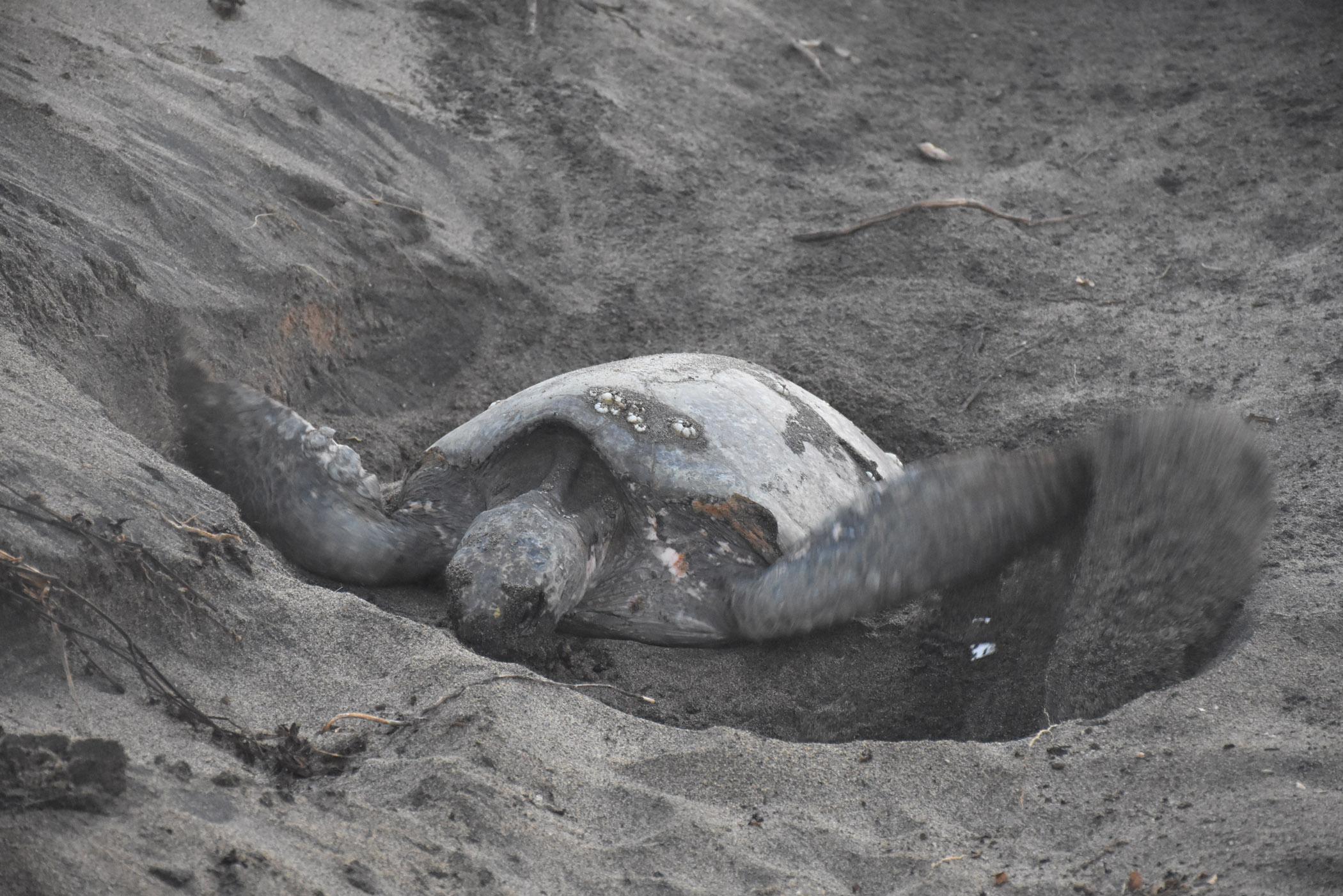
Finding the turtle nests
Eileen scanned the beach for turtle tracks, which look a lot like tire tracks, and run perpendicular to the ocean. Finding one, she followed it to the end, about fifty yards from the water’s edge and put the jeep in park. “The nest must be high enough so water doesn’t wash them out,” she explained as she got out. “Come on, Coco. Let’s go find some turtles.”
For years, Eileen had to find and dig out the nests on her own. “I would use a sharp stick, poke it in the sand,” she said. If the sand was soft, it could indicate a nest but, she added, “Females will build false nests” to throw off predators. When she found what she believed was a nest, “I’d get on my hands and knees and dig. Coco would watch and one day she just started digging. She can smell the eggs and the turtles.” The Hoeters have three other dogs but none have shown the slightest interest in finding turtle nests. “What would take me an hour to do, Coco can do in twenty minutes. It saves a lot of time. And I don’t ruin my manicure.”
Coco immediately began racing around, sniffing the ground. When she detected a nest, she began digging furiously, stopping occasionally to put her nose deeper in the sand. As soon as she saw some white, indicating that she’s found eggs, she stopped immediately and let Eileen takeover. “You must be very careful,” she said. “I loosen the eggs and I close my eyes. I do it by touch. I take out some sand—it has the mother’s secretions—and put it in the bucket to cover the eggs.”
The eggs are taken to the sanctuary where they’re reburied. Fifty-five days later, between 75% and 85% of the eggs will hatch and the babies will be released to the sea.
Coco can also locate baby turtles
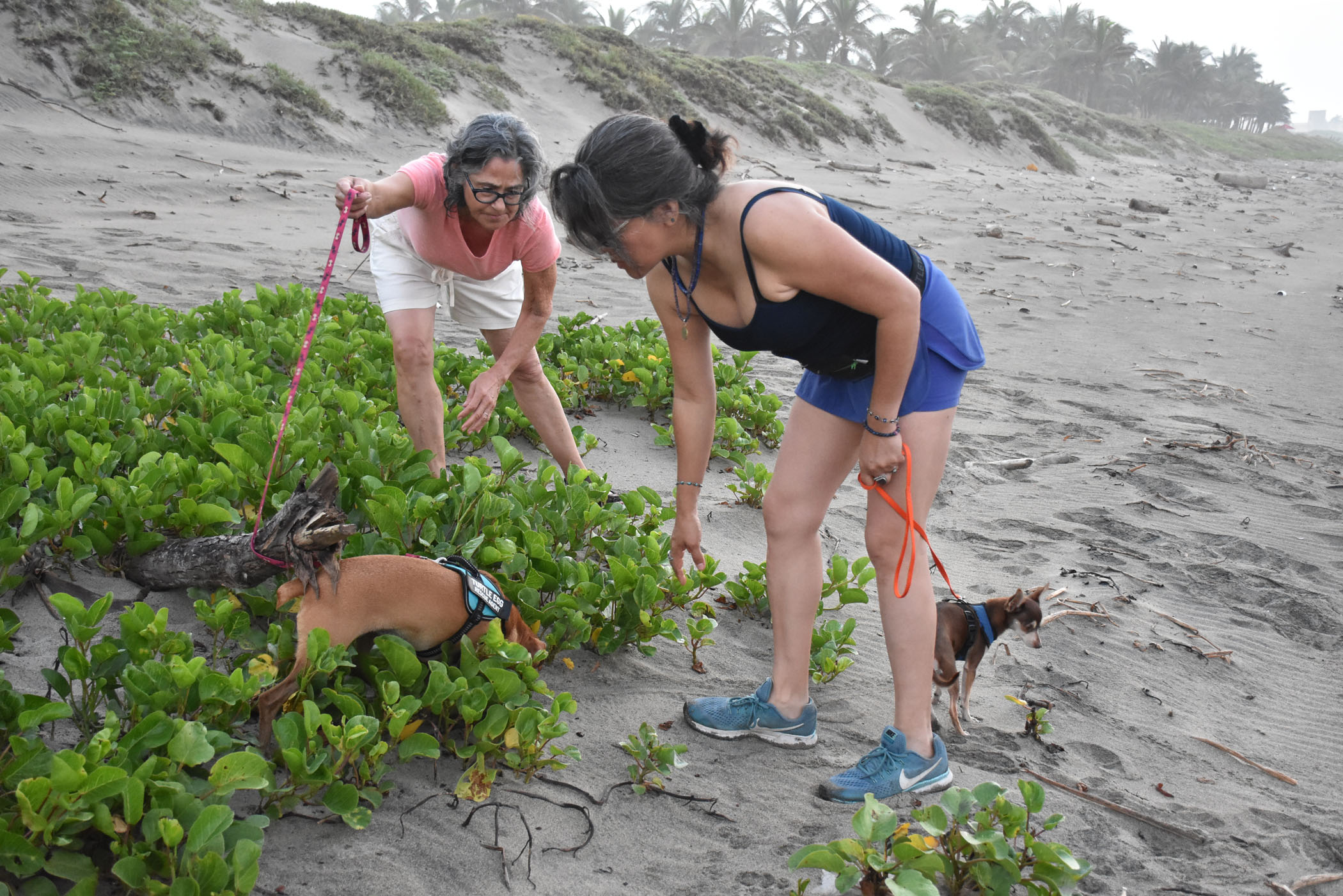
As we were driving back to the sanctuary one morning, Eileen spotted an eagle with a baby turtle in its beak and figured there must be a nest nearby. It was already daylight and getting hot and, if the nest wasn’t located, the babies would most likely die. It didn’t take Coco long to find it and it still had 40 or so babies in it. They were placed in a plastic tub, along with some water. A short distance away, Coco sniffed out another baby. “She found a baby stuck in vegetation and on its back,” said Elsie Elford, a guest at the resort who was helping with the rescue. “The baby never would have made it.”
Babies aren’t released directly into the water. “They pick up something from the sand,” Eileen said. “Sand here is different from sand in all other places. After three years, females come back. Males never come back. No one knows what they do or where they go for three years.”
Baby turtles are a study in determination
After digging out from a nest buried at least two feet deep, they head to the water, 50 yards (15 meters) away. They use their flippers like paddles, pushing themselves forward, pausing every three or four seconds to gather themselves for another push. A wave comes in and knocks them back, turning them around. They point themselves toward the ocean and continue. Waves push them back again and again and, every time, they right themselves and continue. A wave knocks one on its back. It struggles to turn itself over and when it does, heads out again. Finally, they disappear into the water and the ocean takes them on their inevitable journey.
The babies face many dangers as they make their way to the water. They can be eaten by eagles, terns and even crabs. Once in the water, they become prey for any number of predators. They have a three day food sac attached to their shells and after that, begin feeding on aquatic insects, plants and small fish. Hoeter said it’s thought that only one out of a thousand survives.
At the end of one morning’s rescue mission, Eileen spotted a female burying a nest, which was unusual because it was daylight and turtles typically lay eggs at night, when it’s safer. We watched as she slowly covered the nest with sand. It looked like she was exhausted. After an hour, she lumbered out of the hole and made her way to the ocean.
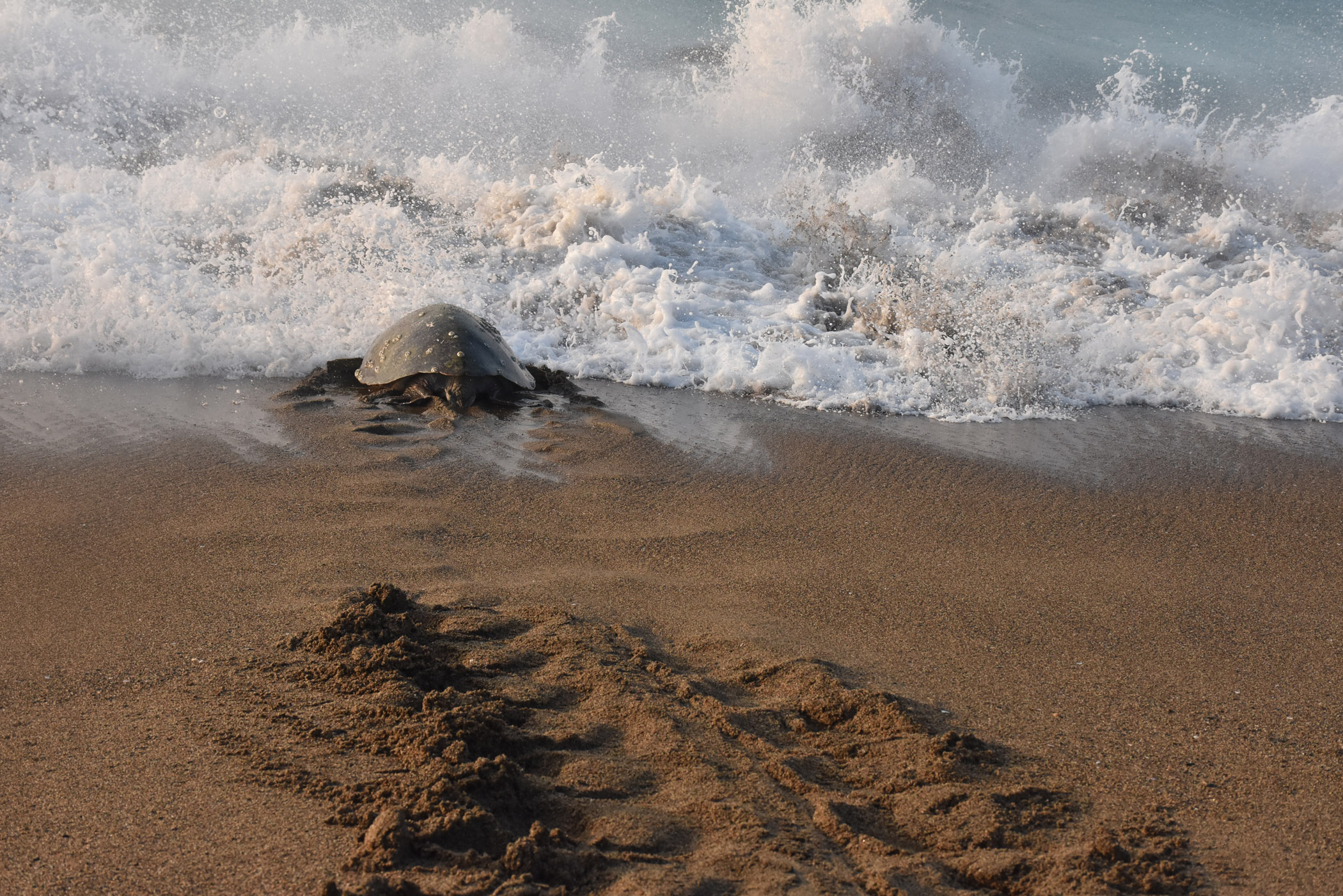
Turtle population change
The Hoeters file regular reports with the University of Guadalajara. “[We] report on the number seen, damage by dogs, the number of eggs collected, and the species, and how many from nests are released,” said Eileen. She said they hadn’t noticed any changes in numbers over the years but, in the last two years, they’ve found some very small eggs in the nest, ones that don’t hatch. She’s not sure why that’s happening.
Climate change will certainly have an effect and may be doing so already. “Eggs that are laid are asexual,” Elaine said. “The higher the eggs are [in a nest], the warmer they are and they will become females. It’s cooler at the bottom and they will become males. With the climate warming, there will be more females.”
The Hoeters are helping to rebuild the turtle population that had been decimated by a turtle processing plant in Barra de Navidad. “We’re rebuilding it,” said Elaine. “We do two-thirds of the work. We hatch the eggs, get them to the ocean and then they’re on their own.” It’s clear that she loves the work. “It’s never the same. It’s an amazing thrill to help these creatures. It never gets boring. It’s a very calm thing to do, an adventure every morning.”
Most of the cost for maintaining the sanctuary is paid for by the Hoeters, although they do have fundraisers and accept donations. For more information or to donate: [email protected]. Website: http://lasirenagordita.com/turtle.html
Related articles
- Rescuing and releasing sea turtle hatchlings in Todos Santos, Mexico
- La Peñita de Jaltemba: Mexico beach with a turtle sanctuary
- Playa Las Tortugas, Playa Platanitos and San Blas: Hidden gems on Mexico’s Nayarit Riviera: Hidden gems on Mexico’s Nayarit Riviera
- Good news for Mexico’s marine turtles and terrestrial tortoises
Joseph Sorrentino is a journalist, photographer and playwright. His website is www.sorrentinophotography.com. His book Stinky Island Tales: Some Stories From An Italian-American Childhood (Amazon) is a collection of four stories in English and Spanish with 26 drawings. It’s available as both a paperback and Kindle version.
Published or Updated on: November 29, 2022 by Joseph Sorrentino © 2022

